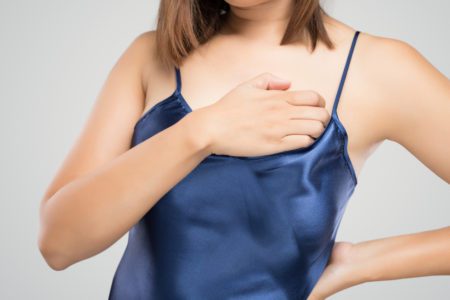It’s extremely common to experience sweating and under boob chafing on a hot or humid day, especially during exercise. Moisture and friction create chafing, the regions between and beneath your breasts are two of the most recurrent areas for chafing to develop due to excessive friction against your skin. When this is combined with insufficient air circulation, heat, and perspiration, under boob chafing becomes a very serious and chronic issue for many women.

Under boob perspiration is without a doubt one of the most irritating byproducts of a hot summer. It is also the primary cause of under boob chafing. Although everyone is enjoying the warmer weather right now, it is well-known for some individuals that the heat may be a daunting experience and that they will stay in a room with air conditioning at all costs.
What Is Under Boob Chafing?
Under boob Chafing is caused by moisture and friction, which is why athletes and women are the most often affected, but breast chafing may very well develop as a result of being overweight or wearing an ill-fitting bra that is either too small or too large. Wearing a bra all day is both unpleasant and irritating because of friction against the skin, particularly while working out. Because of the quantity of moisture that frequently accumulates in this region, bacteria and yeast may grow, exacerbating the discomfort and increasing the risk of infection. If chafing persists, it may turn into a rash that necessitates the use of topical medications.
How To Prevent Under Boob chafing
Use Body Glide® balms to lubricate troublesome areas.
- Keeping friction at bay is as easy as applying Body Glide® balms along your bra line and around the straps on your shoulders, and beneath and between your breasts. The non-greasy, vegan friendly ingredients in Body Glide® balms won’t stain your clothing or exercise gear.
-
Proper Fitting Clothing is Essential.
-
Wear well-fitting sports bras with moisture-wicking fabrics.
- In the event that you are using a sports bra that has a bottom band, be sure to apply anti-chafing lubricant to the skin on your hips, under your arms and breasts. This prevents chafing under the bra band and bra chafing under the arm.
- Cotton sports bras absorb perspiration and retain moisture on the skin, which causes chafing. Anti-chafing sports bras with excellent ventilation and moisture-wicking properties keep skin dry and cool.
- Find a proper fitting bra. A sports bra that is too tight may dig in and chafe, so opt for one that is snug but not too tight. Putting on your bra and reaching for the sky while clapping your hands above your head is a fast and simple method to check how well your bra fits you. If the bra’s band slips or starts bra chafing on your side, it’s too small. Additionally, you may test it by leaping up and down and choosing the position that permits the least movement of your breasts while being comfortable.
-
Wear well-fitting sports bras with moisture-wicking fabrics.
-
Clean, dry skin is ideal.
- Clean your body with warm, soapy water on a regular basis. A loofah may be used to remove dead skin cells and exfoliate your skin weekly.
- Thoroughly dry to eliminate any remaining moisture.
What Is the Best Way To Treat Under Boob Chafing?
Skin that has just been chafed is injured and delicate, so being gentle while it heals is the first and most important duty.
- Wash away any perspiration, dirt, or dead skin from the afflicted region using a mild (non-astringent) skin cleanser.
- Using a clean cloth, pat the afflicted area dry.
- Bandages and antibiotic ointment may be used to moisturise and treat any damaged skin.
